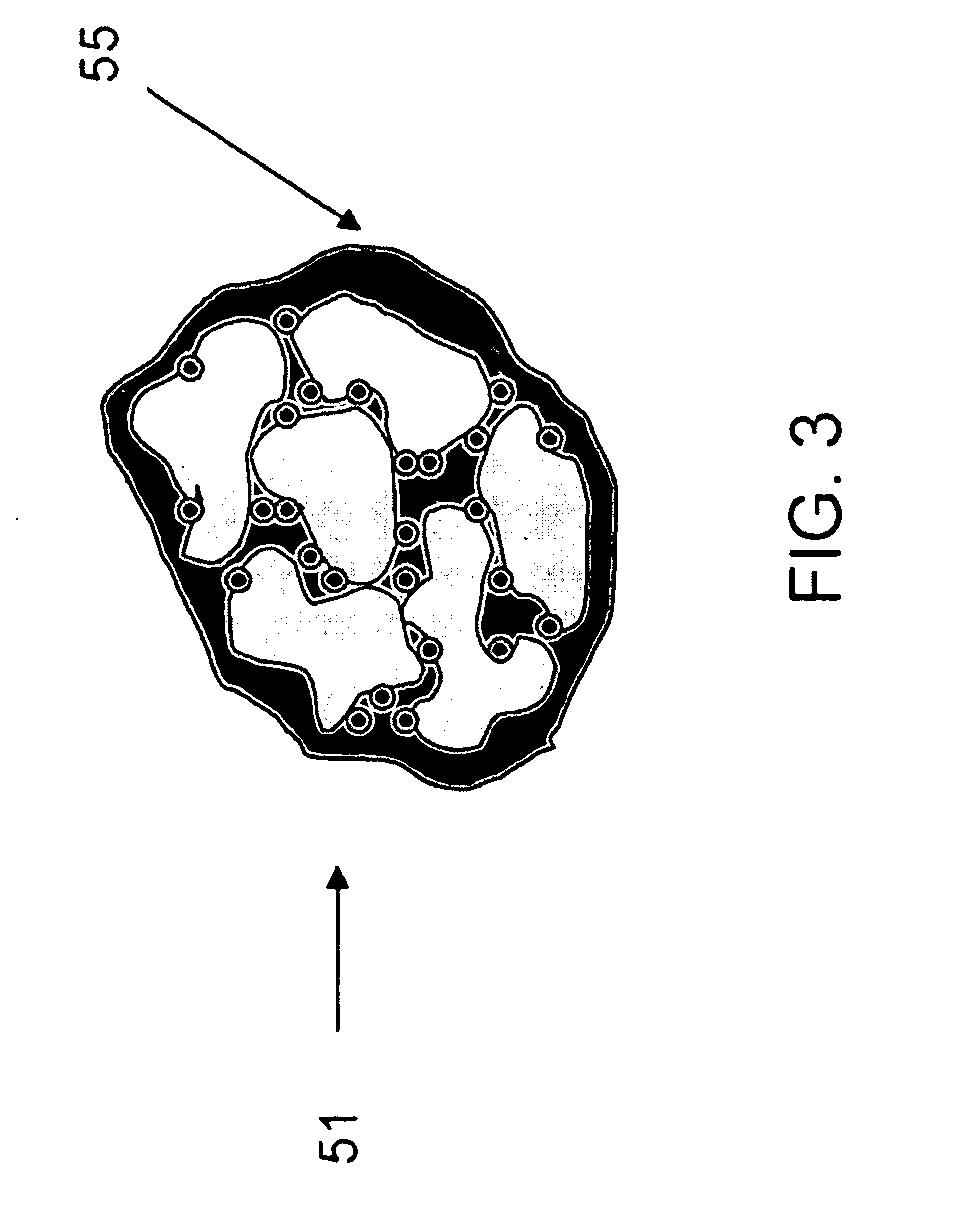Powdered quantum dots
a quantum dots and quantum technology, applied in the field of quantum dots, can solve the problems of quantum dots no longer showing the optical or electronic properties of their bulk parent semiconductor, quantum yields are greatly reduced, and quantum yields of quantum dots are greatly and irreversibly diminished
- Summary
- Abstract
- Description
- Claims
- Application Information
AI Technical Summary
Benefits of technology
Problems solved by technology
Method used
Image
Examples
example 1
Using Fumed Silica as the Dielectric Material
[0044]The quantum dots (100 mg in 5 mL toluene) were washed once with methanol and resuspended in 20 mL anhydrous toluene. To the suspension was added to 1 gram of fumed silica and the mixture was sonicated for 4 hours. The solvent was removed by evaporation. The resulting powder was optionally washed with methanol and optionally milled to size under 5 microns. The size was approximated using a microscope.
example 2
Using Alumina as the Dielectric Material
[0045]The same procedure as in Example 1 was followed, except that alumina was used instead of fumed silica. It has been observed that less quantum dots were absorbed to alumina particles than to fumed silica particles by visual observation of the luminescence.
example 3
Using Colloidal Silica as the Dielectric Material
[0046]150 mL of water was added to 1.7 g of colloidal silica (LUDOX LS, 30% silica in water by mass, from Grace Davison) while stirring rapidly. 50 mg of quantum dots were suspended in 10 mL of anhydrous toluene. The suspension was added to the colloidal silica solution. Colloidal silica (in solution). The mixture was left in a fume hood under stirring for 4 hours while allowing solvent to evaporate to a final volume of 45 ml. Precipitates formed from the mixture were separated out by centrifugation. 1.09 g of product was obtained and dried in air. The resultant product was a brittle fluorescent material which was ground into a fine powder using a mortar and pestle.
Quantum Dot Particles Comprising Quantum Dot-Crosslinked Silane Complex:
PUM
| Property | Measurement | Unit |
|---|---|---|
| diameter | aaaaa | aaaaa |
| diameter | aaaaa | aaaaa |
| physical size | aaaaa | aaaaa |
Abstract
Description
Claims
Application Information
 Login to View More
Login to View More - R&D
- Intellectual Property
- Life Sciences
- Materials
- Tech Scout
- Unparalleled Data Quality
- Higher Quality Content
- 60% Fewer Hallucinations
Browse by: Latest US Patents, China's latest patents, Technical Efficacy Thesaurus, Application Domain, Technology Topic, Popular Technical Reports.
© 2025 PatSnap. All rights reserved.Legal|Privacy policy|Modern Slavery Act Transparency Statement|Sitemap|About US| Contact US: help@patsnap.com



